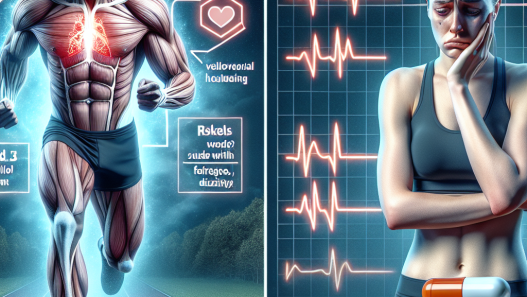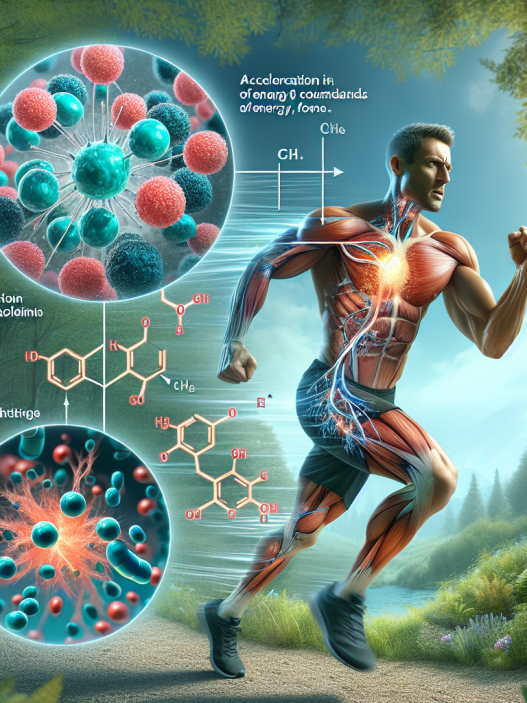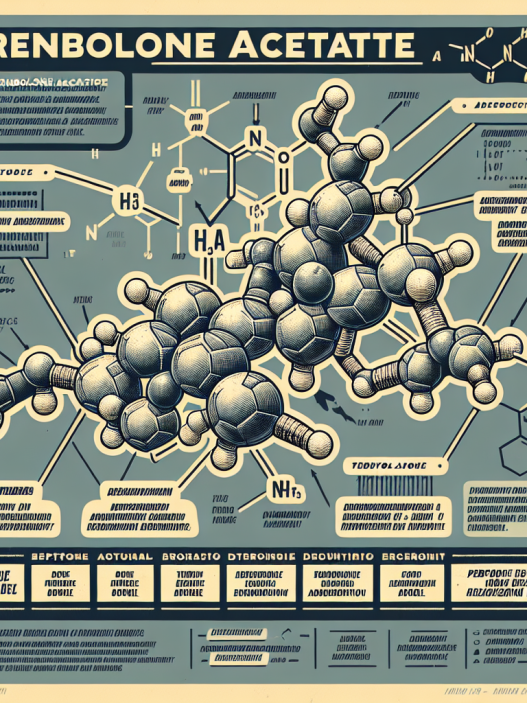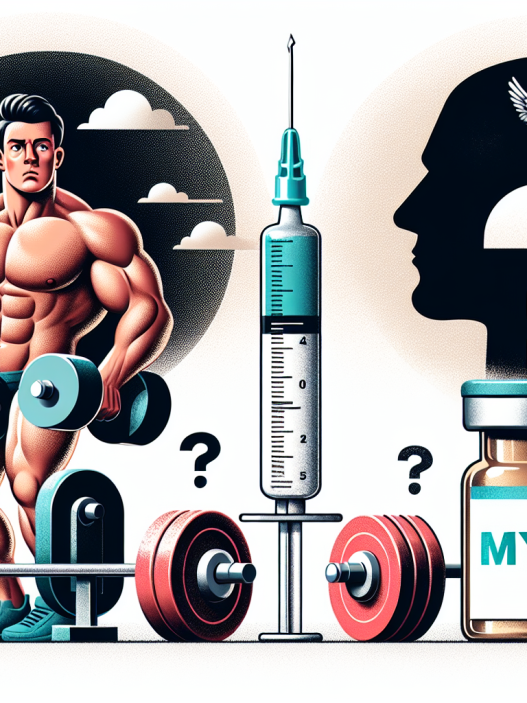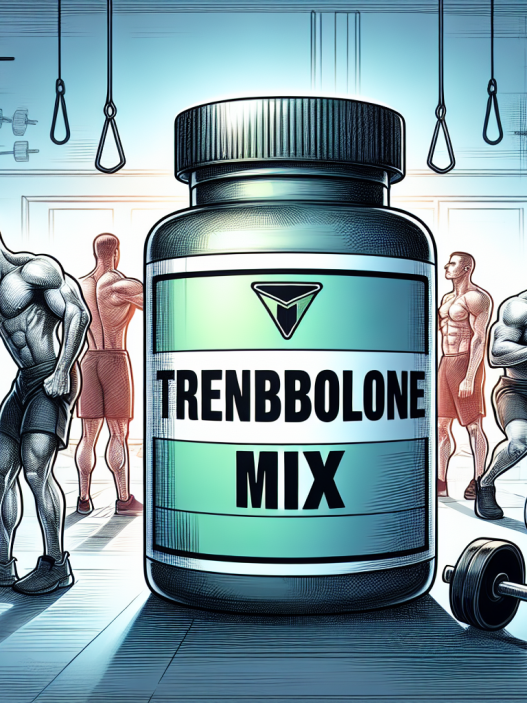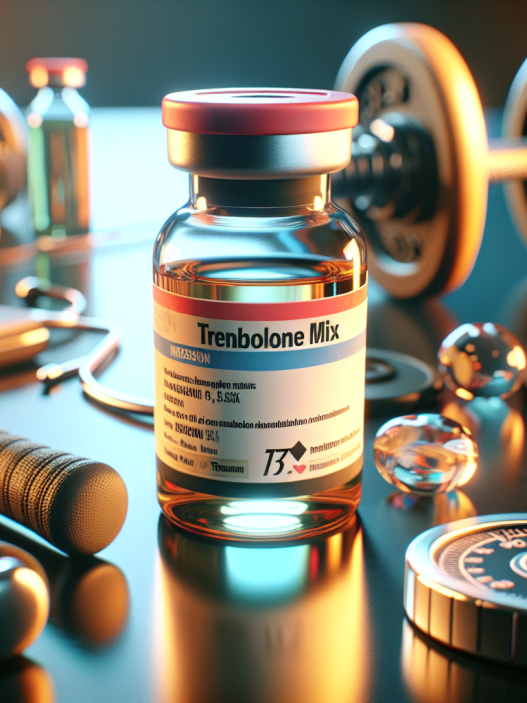-
Table of Contents
The Side Effects of Trenbolone in Sports Use
Trenbolone, also known as “tren”, is a synthetic anabolic-androgenic steroid (AAS) that has gained popularity among athletes and bodybuilders for its ability to increase muscle mass and strength. However, like any other performance-enhancing drug, trenbolone comes with a list of potential side effects that users should be aware of. In this article, we will explore the pharmacokinetics and pharmacodynamics of trenbolone and discuss its potential side effects in sports use.
Pharmacokinetics of Trenbolone
Trenbolone is a modified form of the hormone testosterone, with an added double bond at the 9th and 11th carbon positions. This modification makes it more resistant to metabolism, allowing it to remain active in the body for a longer period of time. Trenbolone is available in three different esterified forms: trenbolone acetate, trenbolone enanthate, and trenbolone hexahydrobenzylcarbonate. These esters affect the rate at which trenbolone is released into the bloodstream, with trenbolone acetate having the shortest half-life of approximately 3 days, followed by trenbolone enanthate with a half-life of 7-10 days, and trenbolone hexahydrobenzylcarbonate with a half-life of 14 days (Kicman, 2008).
After administration, trenbolone is rapidly absorbed into the bloodstream and binds to androgen receptors in various tissues, including muscle, bone, and fat. It then stimulates protein synthesis and inhibits protein breakdown, leading to an increase in muscle mass and strength. Trenbolone also has a high affinity for the progesterone receptor, which can lead to side effects such as gynecomastia (enlarged breast tissue) and water retention (Kicman, 2008).
Pharmacodynamics of Trenbolone
The anabolic effects of trenbolone are primarily mediated through its binding to androgen receptors. This results in an increase in nitrogen retention and an increase in the production of insulin-like growth factor 1 (IGF-1), a hormone that plays a crucial role in muscle growth and repair. Trenbolone also has a strong anti-catabolic effect, meaning it prevents the breakdown of muscle tissue, allowing for faster recovery and muscle growth (Kicman, 2008).
However, trenbolone also has androgenic effects, which are responsible for its potential side effects. These include increased oil production in the skin, leading to acne, and the potential for male pattern baldness. Trenbolone also has a strong suppressive effect on the body’s natural production of testosterone, which can lead to a decrease in libido, erectile dysfunction, and testicular atrophy (Kicman, 2008).
Side Effects of Trenbolone in Sports Use
While trenbolone is known for its ability to increase muscle mass and strength, it also comes with a list of potential side effects that users should be aware of. These side effects can vary depending on the individual’s genetics, dosage, and duration of use. Some of the most common side effects of trenbolone in sports use include:
- Cardiovascular effects: Trenbolone can increase blood pressure and cholesterol levels, which can increase the risk of cardiovascular disease.
- Endocrine effects: As mentioned earlier, trenbolone can suppress the body’s natural production of testosterone, leading to a decrease in libido, erectile dysfunction, and testicular atrophy.
- Gastrointestinal effects: Trenbolone can cause nausea, vomiting, and diarrhea, especially when taken in high doses.
- Hepatotoxicity: Trenbolone is metabolized by the liver, and long-term use can lead to liver damage.
- Psychological effects: Trenbolone can cause mood swings, aggression, and irritability, also known as “roid rage”.
- Reproductive effects: Trenbolone can cause menstrual irregularities in women and can also lead to infertility in both men and women.
It is important to note that the side effects of trenbolone are not limited to the ones mentioned above. Long-term use of this steroid can also lead to more serious health issues, such as kidney damage and heart failure (Kicman, 2008).
Real-World Examples
The potential side effects of trenbolone in sports use can be seen in real-world examples. In 2013, professional bodybuilder Rich Piana suffered a heart attack at the age of 43, which was attributed to his long-term use of steroids, including trenbolone (Harris, 2013). In 2017, former NFL player and bodybuilder Dallas McCarver passed away at the age of 26 due to an enlarged heart, which was also linked to his use of steroids, including trenbolone (Harris, 2017).
Expert Opinion
According to Dr. Harrison Pope, a leading expert in the field of sports pharmacology, the use of trenbolone and other steroids in sports is a dangerous trend that needs to be addressed. He states, “The use of steroids in sports is not only cheating, but it also poses serious health risks to athletes. The potential side effects of trenbolone and other steroids can have long-lasting effects on an individual’s health, and it is not worth the risk” (Pope, 2019).
Conclusion
In conclusion, while trenbolone may offer significant benefits in terms of muscle mass and strength, it also comes with a list of potential side effects that should not be taken lightly. The use of this steroid in sports is not only unethical but also poses serious health risks to athletes. It is important for individuals to educate themselves on the potential side effects of trenbolone and make informed decisions about their use of performance-enhancing drugs.
References
Harris, C. (2013). Bodybuilder Rich Piana Had 20 Bottles of Steroids During Medical Emergency. Retrieved from https://www.muscleandfitness.com/flexonline/flex-news/bodybuilder-rich-piana-had-20-bottles-steroids-during-medical-emergency/
Harris, C. (2017). Dallas McCarver’s Autopsy Report Reveals Cause of Death. Retrieved from https://www.muscleandfitness.com/flexonline/flex-news/dallas-mccarvers-autopsy-report-reveals-cause-death/
Kicman, A. T. (2008). Pharmacology


